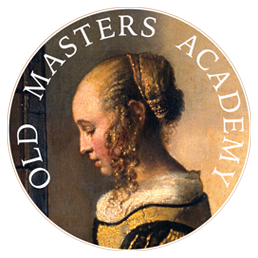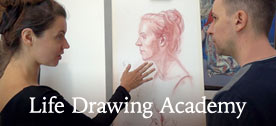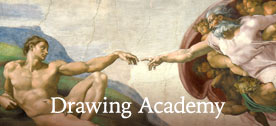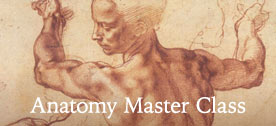Art Lesson 39
Discover how to Paint like the Old Masters Using Modern Materials
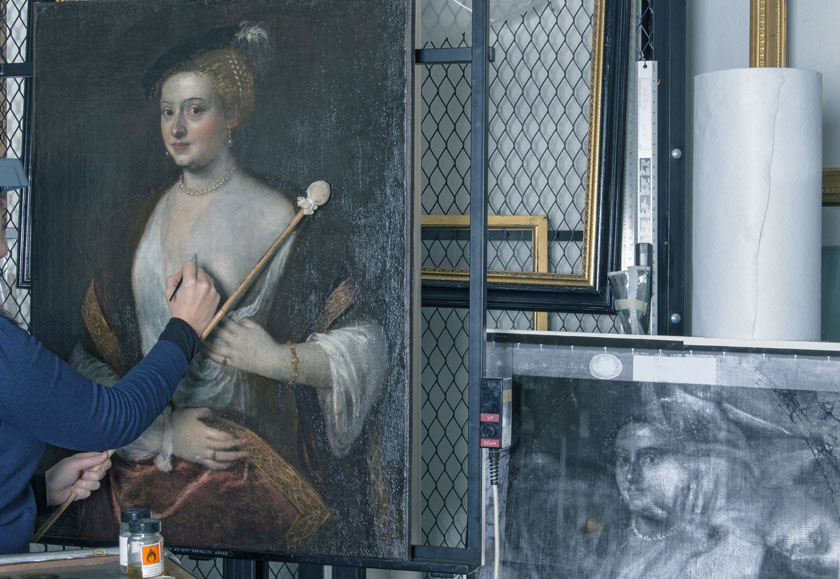
« Back to the Art Lessons List
How to Paint like the Old Masters Using Modern Materials
In this section, you will see how all the information you learned in previous sections can be applied in practice.
We call this section a “Big Painting Project,” as at this stage, you are ready to create something on your own.
The process of the painting shown in this section is for demonstration purposes. You will see the key points of the painting process, and the practical use of different methods and techniques like Underdrawing, Dry Brush technique, Glazing application, and other methods you practiced in previous sections.
Creating an artwork in oils is not usually a straightforward process; it may not go in a linear way from the first line till the final varnishing. In a process of painting, small alterations called “pentimenti,” or even radical changes, can be done in order to make the painting look even better.
Even in the Old Masters paintings, we can see alterations and revisions. In that respect, the Venetian School of picturesque painting especially stands out.
It takes up to 15-20 sessions to make a painting like “Madonna” or “Allegory of Painting.” During each session, you can work on one or many areas of the painting. For example, when you have already completed the initial stage of the painting and work in Glazes, your usual session can continue as follows: you may touch some parts of the face with a Glaze, then work on the details on a pattern, or in some other places that have already dried. But places that are still drying shouldn’t be touched at all. You can paint over such areas ONLY when they are dry.
The finished painting surface can consist of various layers.
This illustration presents a painting in a cross section.
- We used a primed canvas as a support.
- We covered it with an uneven layer of Imprimatura.
- We applied thick or even impasted layers of paint, which can be left as is or finished in a single or multiple layers of Glaze.
- Some passages can be done in a succession of Glaze layers, some in just few.
- In some places, the Imprimatura can be left uncovered, even in a finished painting.
The areas that were redesigned (pentimenti areas) can look like this – an Underpainting that was already finished in coats of glaze was later repainted in dense layers of paint, then glazed again.
And at the very end, when the painted surface becomes completely dry, we cover it with a final coat of varnish.
Each Big Painting Project you see in this section has the following structure:
- The final result of the painting, which is followed by a high-speed demonstration. It helps to appreciate the whole painting process in just a few minutes.
- After that, you will get a step-by-step demonstration on how the painting was created.
- Academy tutor Natalie Richy will explain each step of the process.
Some of the projects (for example, portraits) will be demonstrated linearly, starting from a blank canvas, proceeding to the final varnishing.
But such multiplex projects, such as “Madonna and Child” or “Allegory of Painting,” will be divided into topics such as: how to paint a face, how to paint hands, how to create patterned fabric, how to paint metal objects, and so on. Such split topics will help better explain the painting process.
All paintings featured in the Old Masters Academy were created with a very simple set of materials; there won’t be any fancy mediums or difficult recipes.
Important:
- Between each session, let your painting dry well. Expose it, from time to time, under the sun or just keep it indoors in a warm, well-ventilated and moderately humid room; this will speed-up the time and improve the quality of drying.
- Before you continue painting over a well-dried surface, cover the area you are going to work on with Retouching Varnish. Wait until the varnish dries; it takes 30-60 minutes, depending on the room’s condition. In our video lessons, we didn’t show this process, as it is very repetitive and doesn’t provide much information. Just keep in mind, we retouched the canvas before each session.
- Between sessions, you may do other paintings, drawings, and sketches. This way, you can work on several paintings simultaneously.
